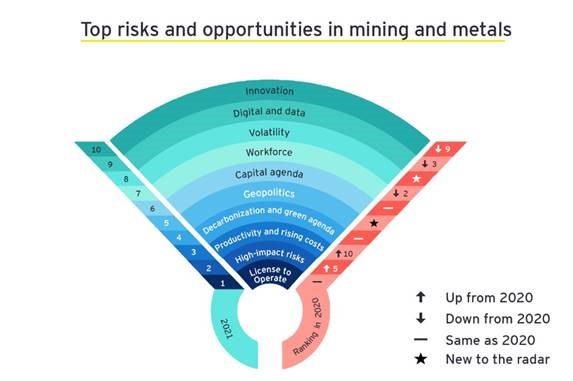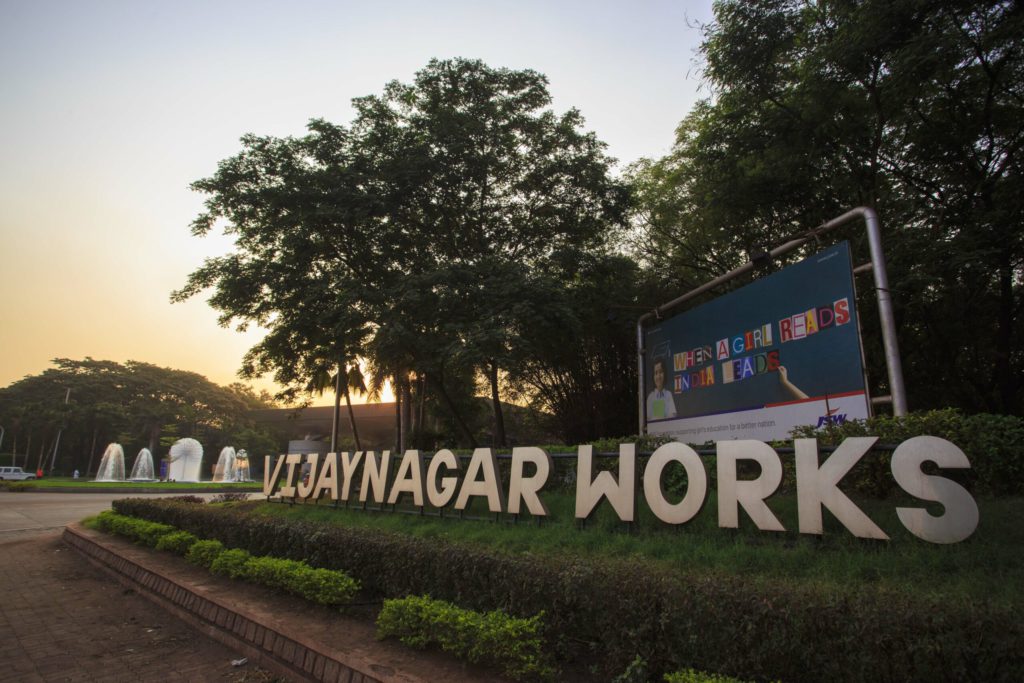License to operate still the top risk for miners – report
The departure of Rio Tinto Chief Executive Jean-Sebastien Jacques over the destruction of ancient Aboriginal heritage sites in Australia has put mining executives globally on notice, and EY says miners will need to work with governments and sector associations to help shape the messaging of the societal contribution and value derived from the mining sector.
“We expect the issue to become even more important as stakeholders broaden and develop a stronger voice. Local communities will have greater expectations around how miners respect Indigenous rights and native title. National communities may push for a return to resource nationalism, with increased debate around who miners sell to and for what purpose,” the report notes.

Among the other risks mentioned by the mining executives interviewed, “high-impact risks” rose from 5th to 2nd place in the ranking due to the impact of covid-19 pandemic on operations.
“79% of board members say their organizations are not very well- prepared to deal with a crisis event”
EY Global Risk Survey 2020
“During the covid-19 pandemic, we’ve seen agile governance enable the rapid decision-making that has driven positive outcomes, such as continued production and the protection of workers’ health and safety,” EY says.
“Post-covid-19, stakeholders will expect more from organizations. Leaders will need to shift from relying on subjective judgment toward adopting data-driven approaches — as multiple factors will need to be taken into account.”
“There is a huge opportunity to remove complexity, overcome historical obstacles to change, and accelerate a transformation agenda that will create long-term value for individual companies, the entire industry and communities,” says EY global mining and metals leader Paul Mitchell.
US-China relations
Two new risks have emerged on the sector’s radar this year: geopolitics (5) and volatility (8).
According to the report, the top geopolitical issues that miners expect will impact their sector are the changing role of the US in the international system, European Union (EU) stability and US-China relations.
“A trend toward economic protectionism to favor domestic producers and ensure host countries receive their fair share of resource wealth will emerge in many jurisdictions.”
The impact of covid-19 has created near-term disruption to supply and uncertainty around demand for many commodities.
“While China’s swift economic rebound has kept up demand for iron ore, and gold and silver retain their status as safe havens, any future disruption could see this change fast,” EY adds.
Rising costs
Productivity and risen costs jumped 10 positions to no. 3 threat to business according to the survey.
“The impact of covid-19 has been mixed, with some restrictions imposing new, unforeseen costs and other measures removing silos that hindered productivity,” the report notes.
“Over the longer term, we believe that tackling this issue effectively requires a true end-to-end focus on costs and productivity across the value chain.”
Workforce, and digital and data, second and third biggest risks in 2020, still appear in the top 10, now sitting at 7 and 9, respectively.
“We believe their lower-ranking indicates that miners believe these issues are now better managed and, for some, business as usual,” notes EY.




